From time to time a scandal broke out in Europe:there was a lady claiming that she was a missing princess. She made claims to the throne, property and royal privileges. The problem arose:how to distinguish a real heiress from a clever toupee?
Each of us has heard of the "miraculously saved" daughters of the last Tsar of Russia, Nicholas II. But these aren't the first women who tried to convince everyone that they had blue blood. It usually didn't work out well for them…
Małgorzata from Norway, a German woman burned alive
Margaret was the daughter of the Norwegian King Eric II. Her life changed in 1286 when her grandfather, King of Scotland, Alexander III, unexpectedly died in an accident. All other descendants of Alexander were already dead, so the three-year-old girl officially became the ruler of the Scots.
King Edward I of England, who was eager to seize Scotland, was not idle. He quickly got his son engaged to Margaret, and then asked that his future daughter-in-law be sent from Norway to the British Isles. The year was 1290. Seven-year-old Margaret boarded a ship, but on the way she fell ill and died during a stopover in the Orkney Islands. It never made it to Scotland.
But that's not the end of the story. In 1300 a certain German woman from Lübeck came to Norway who claimed to be Princess Margaret . She did not die a decade earlier, but was "sold" by her guardian and from the Orkney Islands she went to Germany.
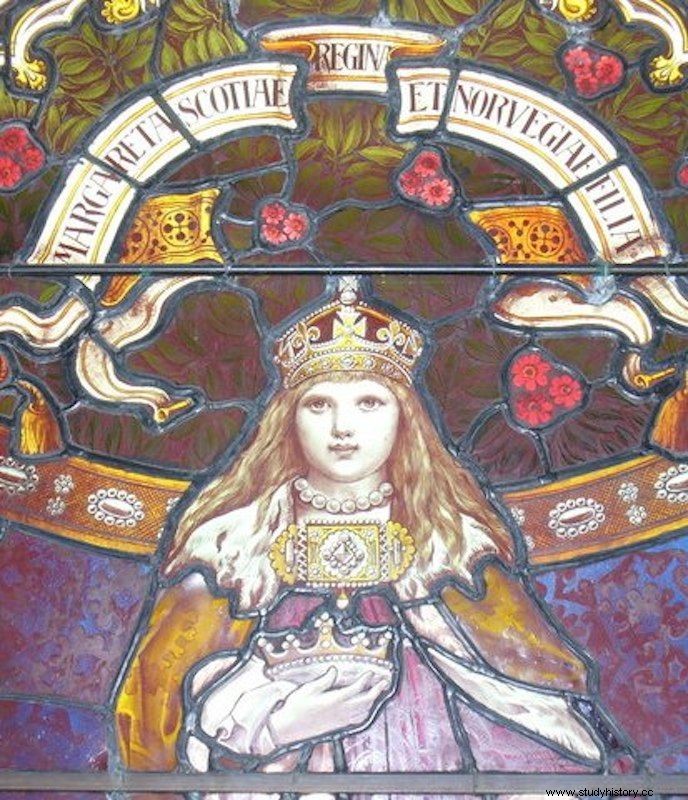
Little Margaret died after reigning four years without ever setting foot in her kingdom. Fragment of a stained glass window (photo:Colin Smith, license CC BY-SA 2.0).
This was not the case in medieval Europe. Except that the alleged princess's story lost credibility for two reasons. First, the body of little Margaret was brought from the Orkney Islands to Norway, and King Eric II ordered the coffin to be opened and identified the deceased daughter . Secondly, the newcomer from Germany was about forty years old (and had gray hair - according to the sources), while the real Margaret would be only seventeen years old.
The self-proclaimed princess and her husband were arrested and taken to Bergen. In 1301, King Haakon V, Eric's brother and successor, stated that the newcomer was not his niece. The sentence was cruel: the fake Margaret was burned at the stake, her husband was shortened by a head . Interestingly, some believed that the trickster was really a missing princess who faced an undeserved punishment. Pretty soon, the self-proclaimed man began to be revered as a saint.
Perhaps the magnate, Audun Hugleiksson, was behind the entire masquerade with Margaret. He was an advisor to King Eric, who during the reign of Haakon V lost not only his influence but also his freedom. The introduction of a potential candidate for the crown could destabilize the Norwegian political scene and allow him to be released from prison. The plan didn't work out, however, and in 1302 Hugleiksson was hanged.
Princess of the brothel
Another trickster who pretended to be a Scandinavian princess ended up better. In 1766, a woman calling herself Anna Zofia Magdalena Fryderyka Ulryka declared that she was the illegitimate daughter of King Christian VI of Denmark. Her mother was to be the royal sister-in-law, Zofia Karolina, a widowed countess of Friesland. Therefore, Anna Zofia Magdalena Fryderyka Ulryka expected money from the Danish state.
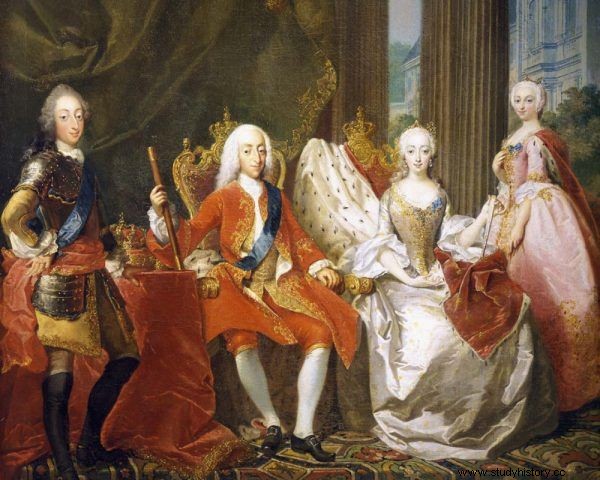
Christian VI's family - a king with his wife and two children in 1744. In this configuration, there was no room for the alleged illegitimate daughter of five names. Fragment of a painting by Carl Marcus Tuscher (source:public domain).
The story had arms and legs. The close relationship between Christian VI and his sister-in-law was no secret , there were even rumors of their affair, so an illegitimate daughter would come as no surprise. A special commission was set up to take a closer look at the alleged princess' claims. The case was taken seriously, chaired by Henrik Stampe, the most important lawyer in Hamlet's homeland.
It turned out that the woman previously worked as a prostitute in Amsterdam . After she fell ill with a venereal disease, she went to Oldenburg for treatment, and from there she moved with her lover to Copenhagen. That's where they were supposed to come up with the idea of extorting money based on the story of the missing princess.
Anna Zofia (and so on) was sentenced to life imprisonment, but later was released and even received a salary! She died in 1805, and in the book of deaths she was called "Miss" ( Frøken ), which would suggest noble origin. Maybe her story was true after all and discredited to avoid scandal?
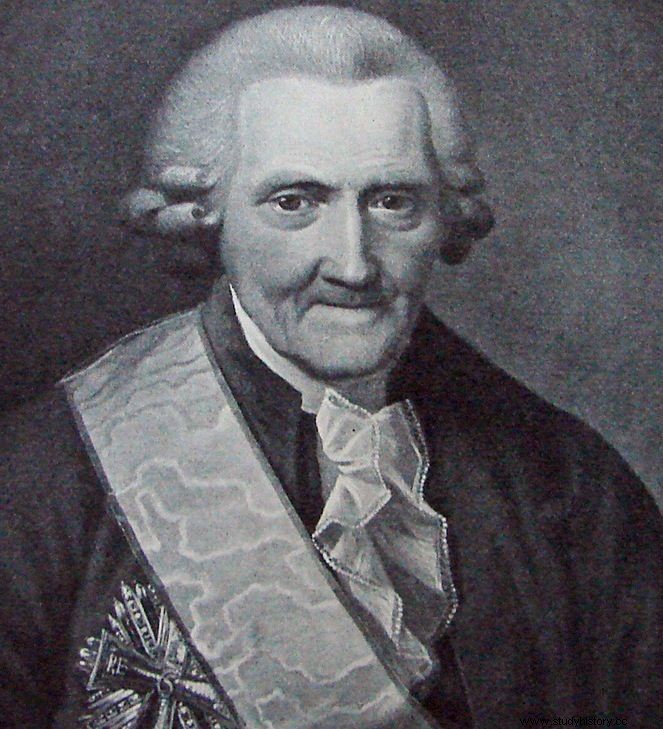
The case of Princess Anna Sophia was so taken over that the most eminent lawyer in the country, Henrik Stampe, was involved in explaining her. Fragment of a painting by Jens Juel (source:public domain).
Self-declared woman with Poles in the background
The 18th century was especially popular with adventurers, such as Casanova, Cagliostro or our Radziwiłł "Lord Lover". This group also included a woman claiming to be a princess. She used various surnames - Pani Azozowa, Duchess of Wołdomir, Countess of Pinneberg ... in literature, both beautiful and scientific, she is known as the Duchess of Tarakanova.
She entered history in 1774 when, while in Paris, she began to proclaim that she was the daughter of the Russian Empress Elizabeth and her secret husband Aleksy Razumowski . It was no longer an attempt to force a salary, but an incredible gamble - an attempt to take over the entire Russian Empire!
At that time, Russia was ruled by Catherine II, whose rights to the throne were quite fragile. She took the throne after overthrowing and murdering her husband, Peter III. Later, she had to contend with the Pugachev uprising, which only fell into her hands in 1774.
Meanwhile, stories about the mysterious daughter of Elżbieta and Razumowski had been circulating for years - one could take a risk. After all, not such things happened in the history of our eastern neighbor, it suffices to recall the dimitriads.
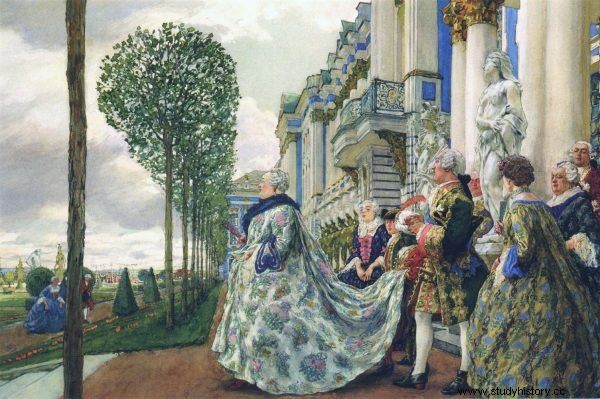
Tarakanova pretended to be the daughter of Empress Elizabeth, ruling Russia for 20 years. Painting by Yevgeny Yevgenyevich Lanceray "Elizabeth Petrovna in Tsarskoye Selo" (source:public domain).
Who was then interested in starting a storm in Russia? Poles, of course, and more specifically participants of the Bar Confederation which was crushed by Russian troops. Many Confederates found themselves in exile, and some of them made contact with the self-conspirator.
Political talks were held. Even Karol Radziwiłł, "Lord Lover", met with her. The affection for Madame Tarakanowa on the Polish side was not only political. Michał Domański of the Laryssa coat of arms, surrounded by the famous nobleman magnate from the Pinsk poviat, fell in love with the alleged pretender to the Russian throne .
He accompanied her on a journey through Italy, where they both let themselves be lured to the Russian ship "Izydor". Arrested by the tsarist services, they made a detour via Gibraltar and the Neva to the Peter and Paul Fortress.
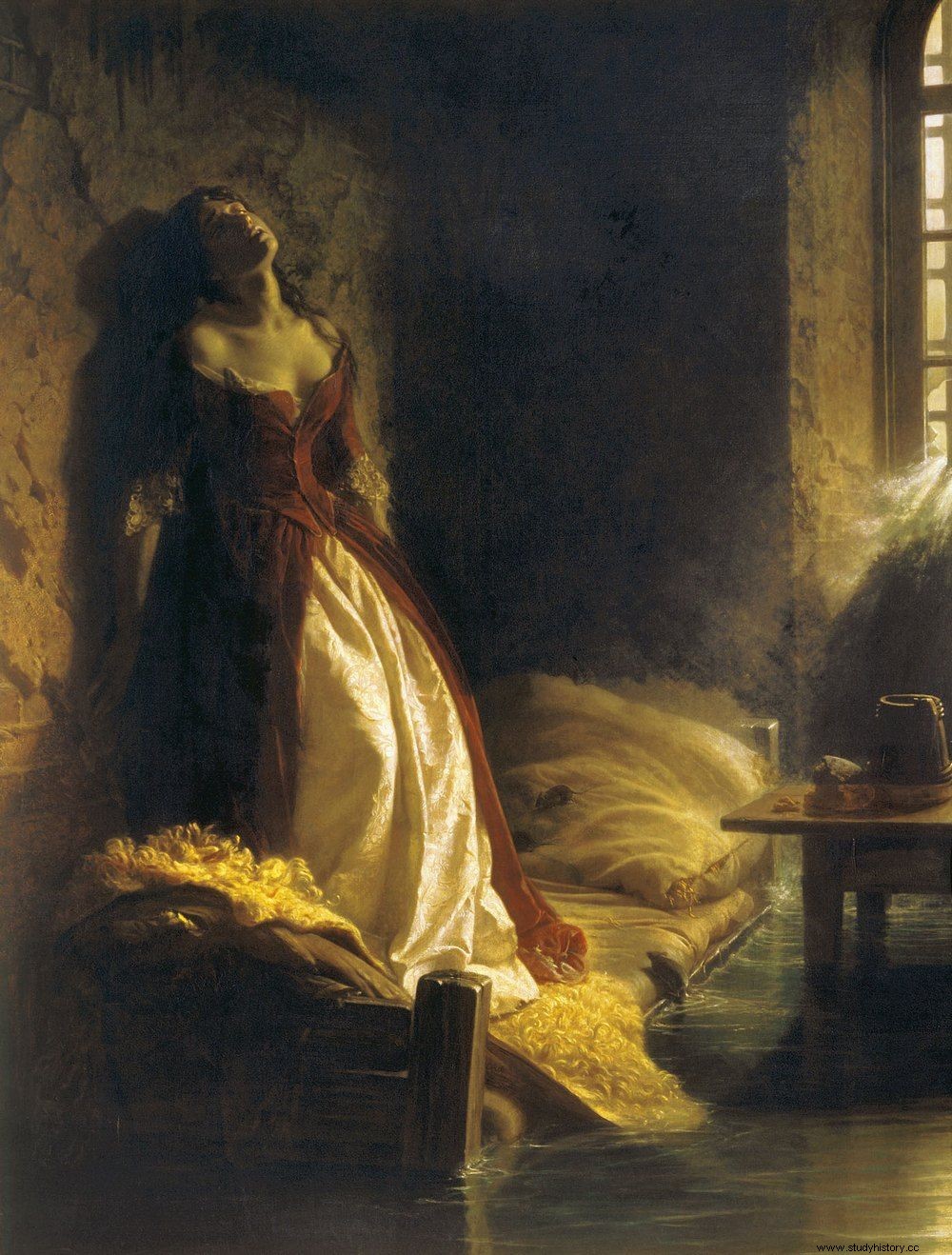
According to legend, Tarakanova died in the flood. This misconception is illustrated by Konstantin Flawicki's painting from 1864 (source:public domain).
Tsarina Catherine II was ruthless. Tarakanova never got out of prison again after a year she died of consumption - at least that was the official version. There was news about Domański that he had been hanged in Moscow. In fact, he was released, but had to sign a pledge not to reveal any details of the self-proclaimed scandal.
Exotic Princess Caraboo
As you can see, self-proclaimed princesses usually ended up badly. However, there were exceptions. Such was the story of Mary Willcocks, the daughter of a shoemaker from Devonshire, England, who had an amazing imagination.
In 1817 dressed in exotic robes entered the house of a shoemaker (apparently she was lucky with people of this profession) in Amlondsbury outside Bristol, and without a word she lay down on the sofa. The host's surprised wife first notified the local overseer, and that of her superior, Sir Samuel Worrall.
The news of the mysterious stranger began to spread, and Mary Willcocks was in her element. As Linda Rodriguez McRobbie describes in her book "Naughty Princesses":
She was petite - just over a meter and a half tall - "attractive and endearing", with dark eyes and hair. She looked about 25 years old. She did not carry anything that would allow her to establish her identity and communicated with the environment mainly through gestures.
The strangest thing was her behavior. When she was shown the main room of the farm, she looked moved by the picture on the wall of pineapple and told her hosts that it was "a fruit from her country." She prayed before drinking her tea and seemed to have no idea what the bed was for.
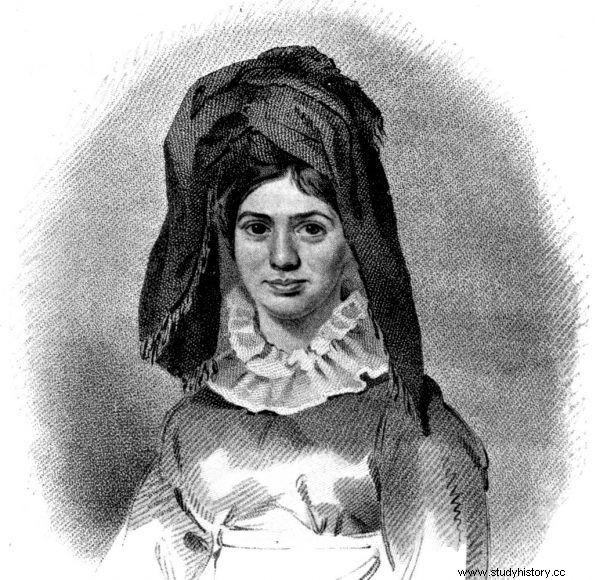
Thanks to her exotic beauty and lush fantasy, Caraboo seemed believable in the role of a princess from overseas. Engraved artwork by N. Branwhite'z (source:public domain).
She spoke in an unknown language she had invented. Over time, however, she began to get along with the locals and told her amazing story. According to her words, was Princess Caraboo from the far land of Javas . It turned out that her mother was killed and eaten by cannibals, she was kidnapped by pirates, but somehow she managed to escape ... without a doubt, the girl had a fantasy.
The truth quickly emerged, but it was not faced with any unpleasant consequences. Her story did not threaten any of the greats of this world. Just a local curiosity. Mary went to the United States for a few years, where she performed in theaters as Princess Caraboo. However, she did not make a great career and returned to England. She moved to Bristol, where she delivered leeches to hospitals and pharmacies. She died in 1864 at the age of seventy-three.
